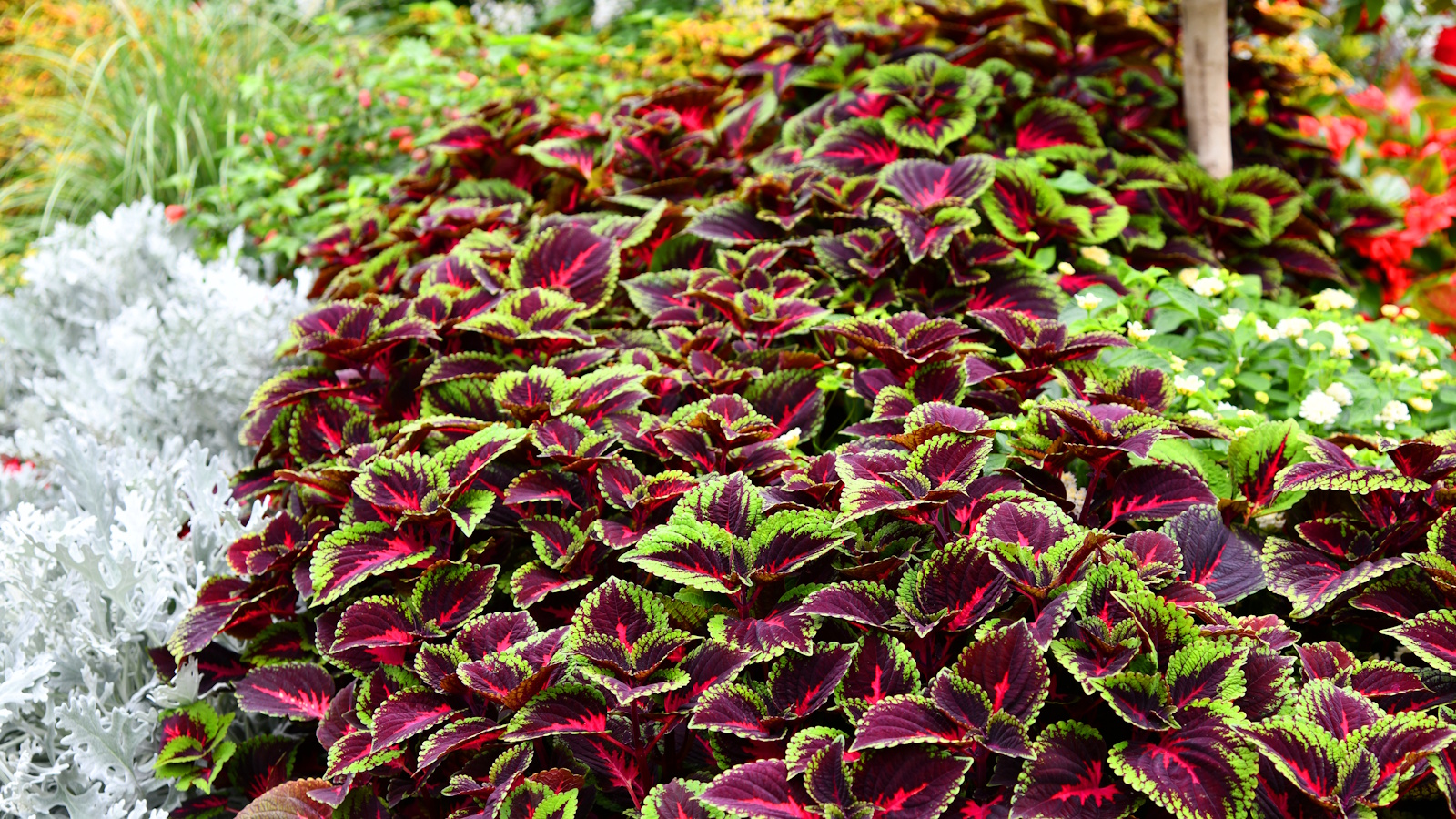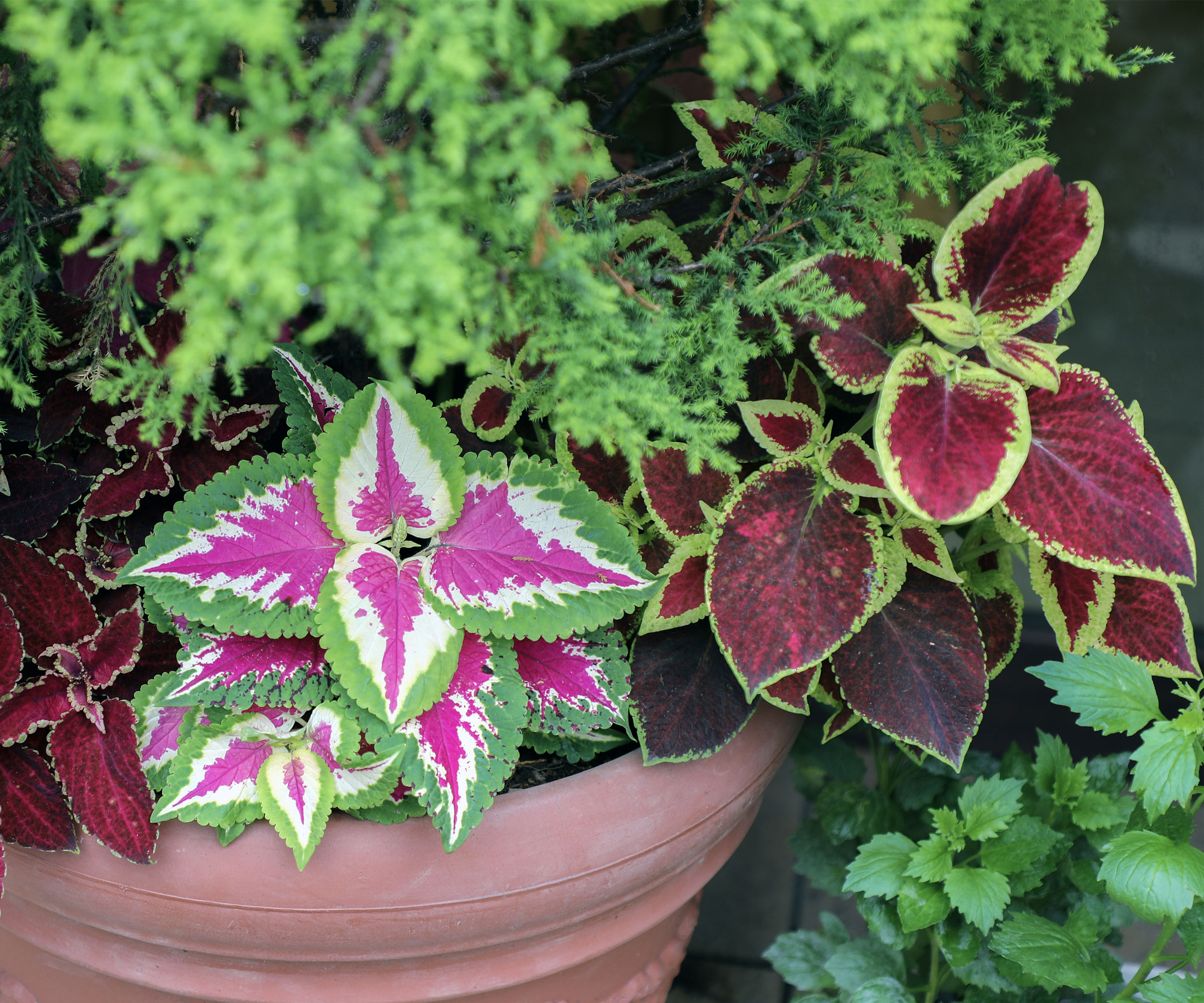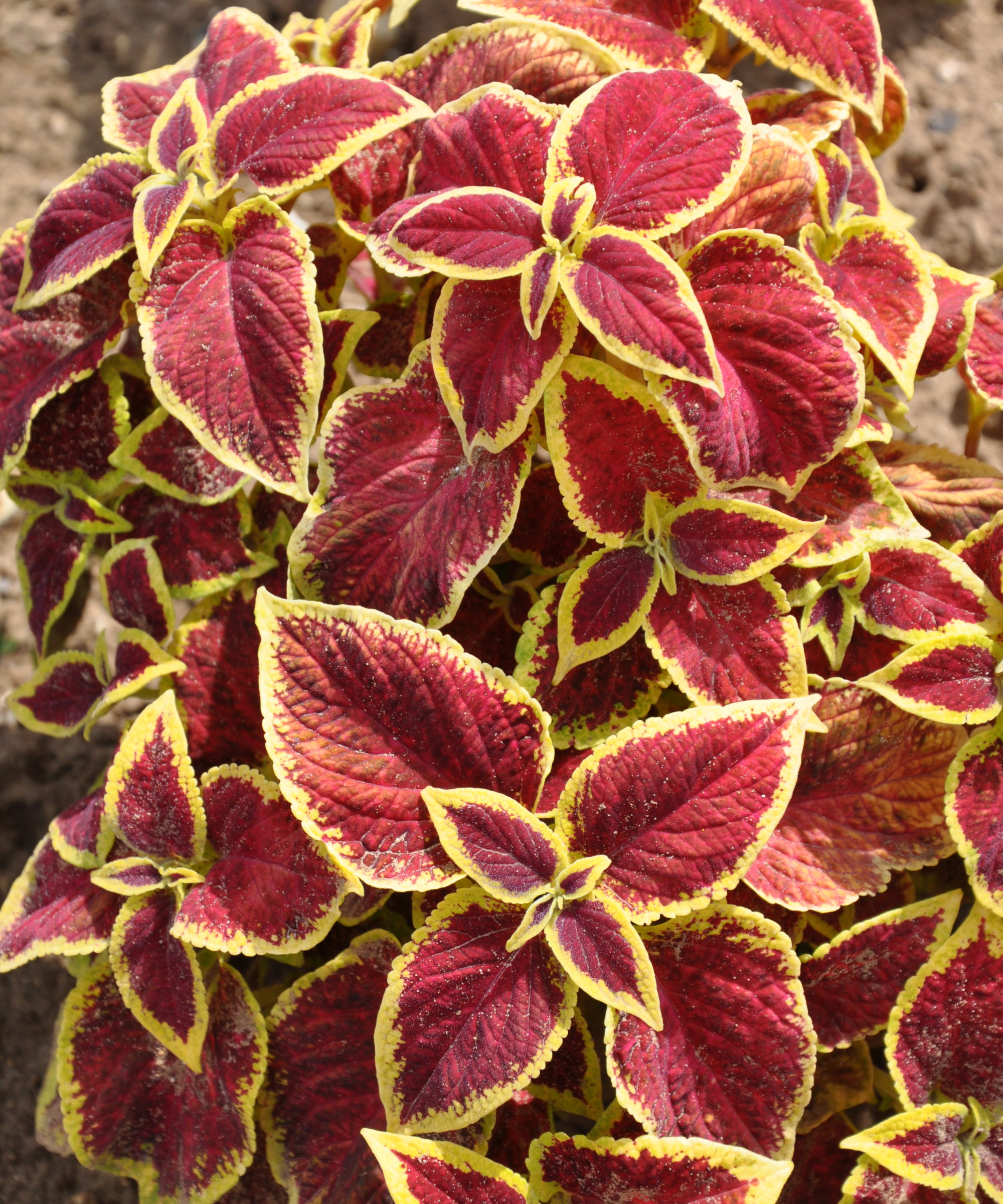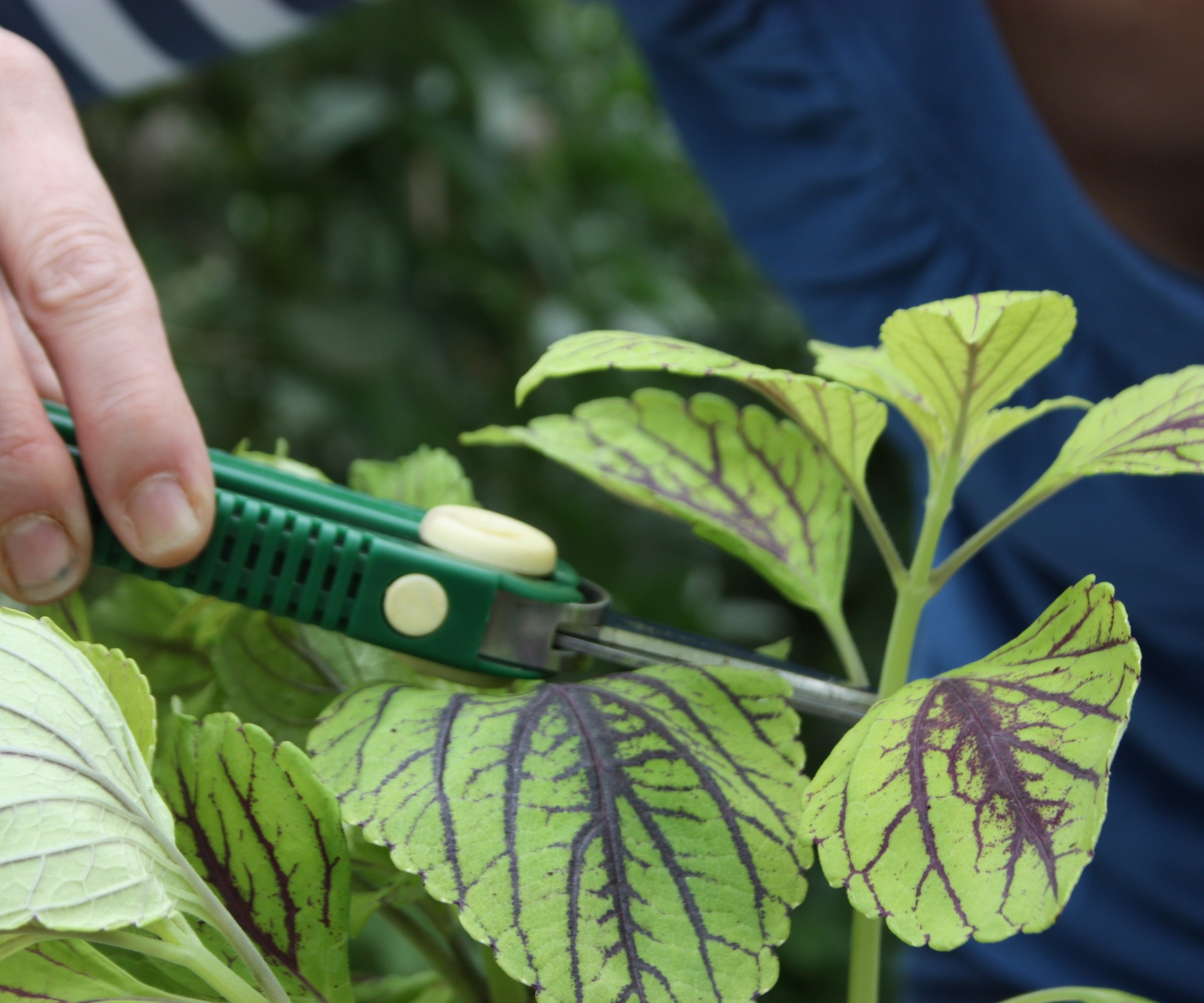
Coleus are dramatic tender plants that are unmistakable for their leaf coloration. As you can see in the images here, many coleus varieties produce leaves with contrasting pink, green, red or purple markings that make for impactful additions to any border or pot display.
Coleus plants are often treated as tender annuals in most regions, although can be considered perennials in warmer, equatorial climates. As a former professional gardener, I have grown Coleus scutellarioides 'Angel of the North', which produces rich, crimson foliage and looks particularly impressive when planted in a container. For an unusual plant, I can highly recommend this red variety.
So, if you are looking for information on how to care for or cut back coleus, our comprehensive guide covers everything you need to know how to grow coleus, helping you to add a tropical touch to any space.

How to grow coleus plants
The coleus genus is part of the mint plant family, Lamiaceae. Coleus leaves are similar to many mint varieties, including lemon mint and apple mint, with opposite leaves forming on square stems, with a slightly serrated edge. Much the same as these mint plants, coleus are not complicated to grow, although there are certain rules to follow to guarantee success. Here, one garden expert shares all the information you need to learn about how to grow coleus plants in your yard.
Growing habits for coleus plants

'Coleus is an easy-to-grow and fun plant that you’ll find in a wide range of foliage variations,' says Tabar Gifford, plant expert and American Meadows master gardener.
While coleus can be considered low-maintenance plants that can fill borders and pots with color, they are very temperature-sensitive. For this reason, they are often grown as part-shade annuals, prized for providing seasonal interest that will only survive for one growing season.
'In terms of how to grow coleus, this genus needs evening temperatures above 60°F/16°C,' Tabar adds. 'I would suggest planting outdoors only after the last frost, or else you risk losing your new plant before the growing season is underway.'
Alternatively, if you want to grow coleus from seed, this is best done indoors usually around eight weeks before your last frost. Once large enough to handle, pot them on before moving outdoors when the temperatures rise. Coleus seeds are available from Walmart.
As Tabar says, unless you reside in US hardiness zone 9 or zone 10, it is safer to grow and plant coleus outdoors from April or May, where it will add 'interesting and vibrant foliage for all of summer through to fall. For the best results, plant in bright but indirect light, with most varieties tolerating shady spots.
'While they do produce spires of dainty flowers, coleus plants are more well-known for their leaves. It is easy to see why,' Tabar continues.
Coleus 'Kong Jr' is a versatile, easy-to-grow plant with striking green, pink and red leaves, ideal for your pot displays this year.
Growing guide for coleus plants

Soil: Coleus plants prefer moist, nutrient-rich soils. When planting in borders or pots in the spring, apply a thick layer of organic soil, available from Amazon, which will improve soil health and help your coleus plants thrive during the summer months.
Light: Most coleus varieties prefer part shade, doing best in situations with a few hours of morning sun followed by afternoon shade, which will protect your plants from leaf scorch.
Watering: These plants do best in consistently moist but not waterlogged soil. During long, dry periods in summer, it is a good idea to carry out some deep watering, which can help young plants to grow despite challenging weather. In addition, mulching your plants will help to maintain moisture in the soil and suppress weeds.
Fertilizing: 'To encourage vibrant foliate, you can feed with a balanced, water-soluble fertilizer every two to four weeks during the growing season,' says Tabar. Specimens grown in rich soil will probably not need much fertilizer, although for those plants grown in pots, stick to a monthly feeding schedule as part of your summer gardening checklist.
Pruning: 'If you prefer a bushier plant, then it’s recommended to regularly pinch out growing tips to encourage bushy growth and prevent the plant from becoming leggy,' Tabar says. 'Remove flower spikes as they appear to direct energy into foliage production.' Pruning snips are available from Amazon.
Toxicity: While coleus plants are not highly toxic to humans, the oils in the leaves can irritate the skin. Coleus plants are considered poisonous to cats and dogs, however, so keep an eye on your pets when they are out in the yard.
One of the most impactful coleus varieties, 'Black Dragon' has dark purple and pink leaves that stand out wherever they are planted. Sow these seeds in late winter, to be planted out in late spring.
FAQs
Can I grow coleus indoors?
'Coleus are frost-sensitive and typically grown as annuals outdoors,' Tabar says. 'However, you can overwinter coleus and use them as indoor plants. Bring plants indoors before temperatures drop below 60°F, potting them up and placing them in a bright, warm location. I would always advise to water coleus sparingly through the winter, before moving them back outdoors in spring.'
'It is very easy to learn how to propagate coleus by rooting cuttings in water,' Tabar says. 'If you see a particular plant that catches your eye 'out in the wild', ask if you can take a snip of it to bring home. Over the years, I’ve taken cuttings (with permission) from friends’ homes, restaurants, planter boxes and flower arrangements at event spaces. Just be sure to ask first, you’ll be surprised how many people say yes.'







